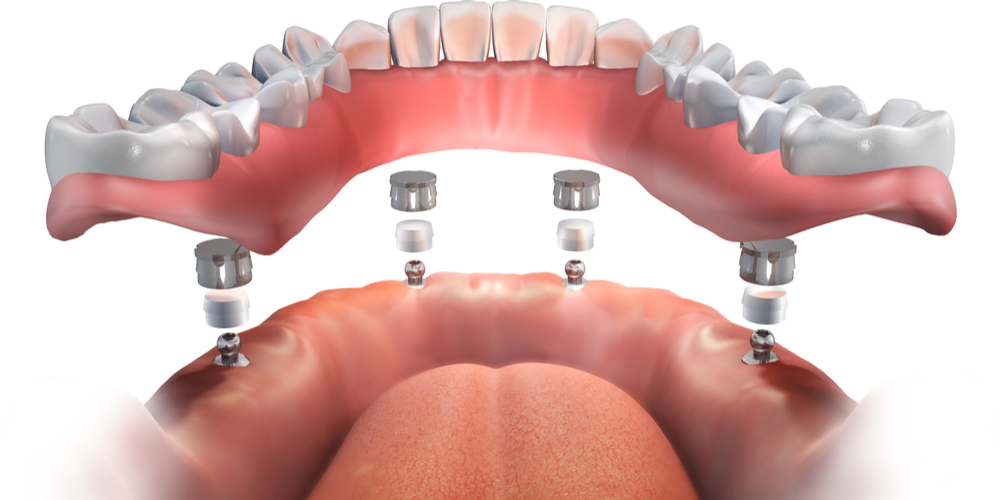
Are you tired of ill-fitting dentures that constantly shift around your mouth? Do you find that you suffer from constant mouth sores due to the friction of old dentures? Or have you been in an embarrassing situation where you found that your dentures slipped out of your mouth in public? If you are tired of these frequent occurrences, then why not consider dental implant supported dentures?
What are dental implant supported dentures?
Often referred to as implant retained dentures, dental implant supported dentures are designed to replace missing teeth using two dental procedures. The first one makes use of the dentures and the second procedure uses the standard dental implant process. The denture is special because it is not directly placed on top of the gums; instead it is attached to and supported by several dental implants. This means that the denture is set firmly in place, with no chance of movement or discomfort.
What are the advantages of implant retained dentures?
- As many denture wearers already have most of their teeth missing, no teeth will have to be removed in order to make room for the implants/dentures.
- The denture can be removed via the attachments in order to be properly cleaned. This means that oral health will be kept to a very high standard.
- In some cases a new denture won’t have to be made, which will obviously save a lot of money.
Are there different types of implant retained dentures available?
Yes, there are two types of implant retained dentures which are commonly used. These include the ball and bar implant supported dentures. The ball-retained dentures uses two different types of attachments, known as ‘male’ and ‘female’ attachments. In the case of the ball-retained dentures, the male attachments are found at the bottom of the denture and are fitted into the female attachments found at the top of the actual implant. The bar-retained denture makes use of a thin metal bar which is placed inside the curve of the jaw. Following this, the denture is clipped to the metal bar using the 2-5 implants used.
What is the dental implant process?
- The patient is first placed under a general anaesthetic, which means no pain shall be felt.
- The implants, in the form of metal rods, are then placed through the gums and then into the jawbone.
- 2-4 implants are usually placed in the bottom jaw for example, in order to hold the complete set of lower dentures.
- The implants are left to heal for several months, in order for the implant to successfully integrate with the jawbone, in a process known as osseointegration.
- The patient then returns to have their dentures attached to the abutments (which are left outside of the jawbone).
Denture retained implants have been especially designed for those who have been suffering from the problems caused by long-term denture wear. The procedure is great for providing added support for both the upper and lower set of dentures. If you feel denture retained implants would benefit you, then visit your dentist today for an in-depth consultation.